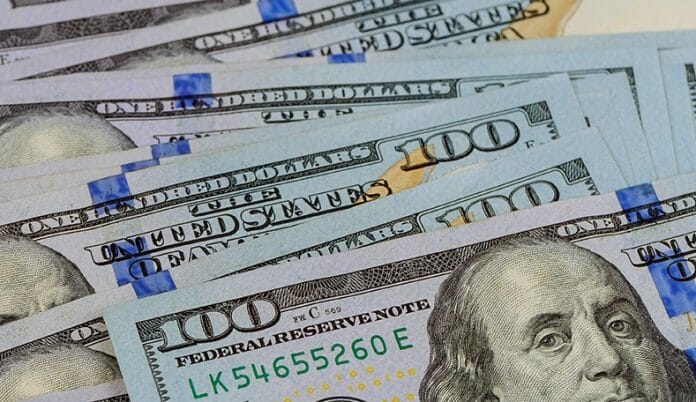The US dollar has maintained relative stability against other major currencies, trading in a narrow range of 102.00 to 103.00 in recent weeks.
Last week’s notable event for the US dollar was the release of a producer price inflation report, indicating weaker-than-expected results. This report has strengthened market expectations for earlier rate cuts by the Federal Reserve.
The US rate market is now pricing in the first rate cut by the March FOMC meeting, with approximately -21bps of cuts expected by March and a cumulative total of around -166bps by year-end.
The PPI report disclosed a -0.1%M/M decrease in producer prices in December, primarily driven by a -0.9%M/M decline in food prices and a substantial -3.0%M/M drop in used car prices. Additionally, there was a favourable -0.8%M/M reduction in trade services, indicating a fourth consecutive decline and a compression of gross margins for wholesalers and retailers.
These developments have further fuelled expectations that the upcoming PCE deflator report on January 26 will continue to reveal slowing inflation.
The core PCE deflator has already slowed to an annualized rate of 1.9% over the last six months to November, fostering anticipation that the Fed will move to lower rates, making policy less restrictive as confidence grows in inflation returning to target.
While the initial release of the weak PPI report led to a sell-off of the US dollar, little follow-through has occurred as the recent range-trading environment persists.
Another significant development impacting the US dollar’s performance at the beginning of this week was the Taiwan election results.
The Democratic Progressive Party won the presidency but lost their legislative majority, requiring collaboration with opposition parties for legislation passage. Lai Ching-te will become Taiwan’s new president, securing 40.05% of the vote.
The initial foreign exchange market reaction has been negative for the TWD and mixed for other Asian currencies, with the TWD declining modestly by approximately -0.4% against the US dollar since last week’s end.
The KRW has been the biggest underperformer, declining by -0.5%, while the THB has strengthened by +0.5%. Market participants are closely monitoring how relations between the new administration and the Communist party evolve, with the victory for Lai Ching-te increasing the risk of further deterioration.
However, the loss of the DPP’s majority may be welcomed by the Communist party in China.
At this juncture, significant easing of geopolitical risk in the region is not expected, posing a continued headwind for Asian currencies.
Market commentary from Luca Santos, currency analyst at ACY Securities









